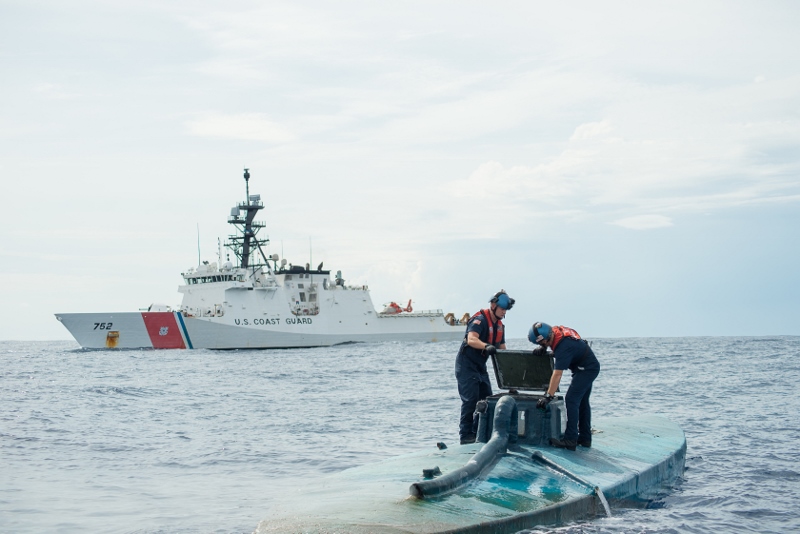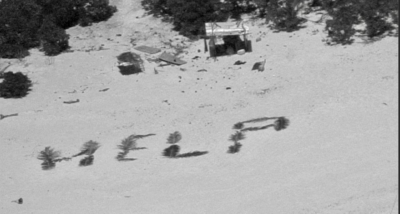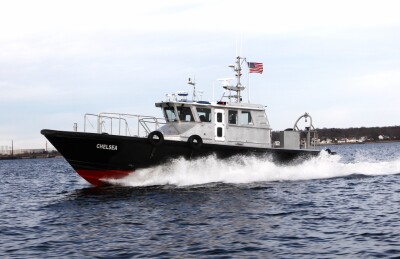There is no shortage of wild sea stories out of the Coast Guard’s drug interdiction effort in the eastern Pacific. But the scale of the campaign – and the volume of drugs likely making it past law enforcement – only intrudes occasionally on the national conversation.
There is local television news coverage when a cutter comes in from patrol and the crew offloads pallet loads of cocaine for the cameras. The cartels’ use of “narco subs” – generally 40’ self-propelled submersible boats, with just a helmsman’s conning tower and snorkel for a diesel engine above the water – are enough of a novelty for news coverage, and some real worries about them potentially sneaking more than drugs into a U.S. harbor or port.
Last year Coast Guard Vice Commandant Adm. Charles Michel told Congress that the service is probably intercepting around 10% of the Western Hemisphere cocaine production. A couple of weeks ago, he told the same House Subcommittee on Coast Guard and Maritime Transportation how seizures that were running at 190 metric tons by June 2015 are already up to 245 metric tons this month, and likely to hit 400 tons by year’s end.
At sea, the Coast Guard and its partners pick up intelligence on when and where drugs may move, and watch the traffickers’ remote sea lanes between Central America and the Galapagos Islands. There are the go-fast speedboats and the narco subs, essentially a modern iteration of the Civil War submarine ram Hunley, and probably just as deadly in bad weather for many crews who would be luckier if caught by the Coast Guard.
Combined intelligence, air surveillance, and the new generation of small cutter boats make it possible to catch them far out at sea, between their launching points in South America and landings farther north.
Pairing the 418’x54’x22’6” National Security Cutter class with the latest Over The Horizon cutter boats “has been a real game changer for the Coast Guard,” Rear Adm. Bruce Baffer, assistant Coast Guard commandant for engineering and logistics, said at the Multi-Agency Craft Conference early this month at the Coast Guard’s Baltimore yard.
With jet drives, the 26’ OTH boats can launch off cutters at 18 knots and kick away on plane, chasing drug boats many miles away. When they return, the boarding teams run right up the cutter’s stern notch ramp to bring in detainees. Sometimes the drug boats themselves are brought up the ramps, where knuckle boom cranes make it easier to offload drug bales.
“Right now the National Security Cutters are coming back with tractor trailer size loads of drugs,” Baffer said. There is so much that finding more secure warehouse space in California could be an issue, he added.
But the drug cartels have even more. The Coast Guard has plenty of surveillance and intelligence about drug shipments, Baffer said. The problem is getting enough boats out there to intercept.
“Our critical need,” he said, “is endgame.”





